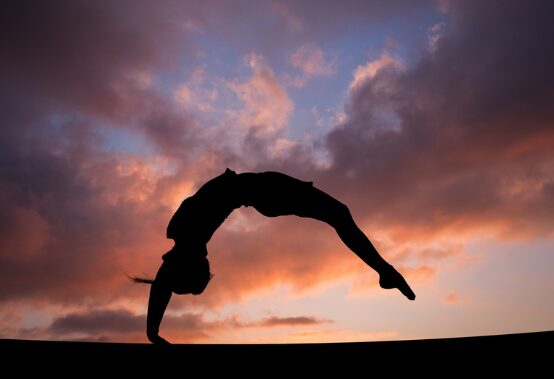Suite 3, Ground Floor, The Gateway,
312 St Kilda Road, Southbank, VIC, 3006
Flipping Safely: A guide to limiting injury during Adult Gymnastics.

In recent years adult gymnastics has gained a lot of traction and limelight due to its impact on physical and mental wellbeing. Not only does it combine athleticism, but it allows artistic expression.
Tired of not feeling motivated at a conventional gym? Excited by the thought of being upside down or walking on your hands?
Here are 3 top tips hot off the press, to help keep your injury risk down.
The Importance of a Warm Up
Before diving into any gymnastics routine, dedicating time to prepare the body for the movements ahead is essential. The aim is to activate and mobilize the body and bring awareness to the quality of your movement. In response, your body temperature and blood flow should both increase. Activities to help prepare the body could include multi-directional jogging, skipping, side stepping, walking lunges, high knees, push ups etc. Want more warm up advice? See our “ramp warm up” blog here. https://performancemedicine.com.au/ramp-up-your-warm-up/
Focus on Technique
Gymnastics is not a race and the complexity of skills will come with time. Everyone has different levels of comfortability with movement and certain skills can be daunting, particularly going upside down or bending backwards. Therefore, understanding and starting with the fundamental shapes and drills will help ease you in and create a stable base to build from. Some terms you may come across include pike, straddle, front and back support, hollow arch and bridge. FInding an appropriate class, coach or specific resources to help you understand these terms safely and how they apply to your body is key to ensure you train optimally and pain free.
Strength and Conditioning
There are different things to consider when it comes to strength and conditioning. The main goal is to improve the strength and conditioning parameters that are difficult to achieve through simply practicing skills. Essentially understanding where your existing strengths and weaknesses are can help. For example, building core strength can help with your balance and stability, so if you are training outside of class, adding in some extra planks, dish holds and leg lifts won’t go unnoticed. Similarly, some targeted areas of importance include the shoulders and wrists. Adding in some extra body weight exercises like pull ups or push ups can help with your handstands or grip strength while exercising using free weights, can help you on rings and uneven bars.
Unsure when to start? Feel free to drop in and ask as many questions as you need to. Here at Performance Medicine, we want to help guide you and make gymnastics the best fitness journey yet.
References
Anderson, Jack. (2019). An Examination and Comparison of the Current Warm-Up Procedures in Scottish Gymnastics. 10.13140/RG.2.2.27568.07687.
~ Stephanie Zamoyski

